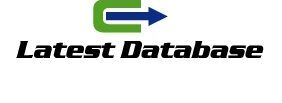Technical debt is a common practice in virtually every development team but abusing it can have a significant impact. It increases resource micromanagement, as the team has to dedicate more time and resources to fix delayed issues later on. Without proper management of technical debt, the project could derail entirely, affecting the company’s image while impacting the product’s release.
Types of technical debt
There are many types of technical phone number list debt. Architecture/design debt occurs when a developer implements sub-optimal architectural design in the hope of bringing short-term profits to the company. They may also introduce code debt into the product i.e. when untested or buggy code is deployed in production.
Infrastructure debt occurs when you buy new tools, cloud storage, etc., for your software development but don’t get to fully adopt them. It can also occur when you implement automation, which can cause changes in the existing infrastructure if it isn’t fully fleshed out. This leads to increased costs of labor and time.
Causes of Technical debt and how to measure it
Technical debt can be caused due to time constraints, insufficient code refactoring, or limited testing. Sometimes engineers submit buggy software just to meet the deadline. This may also be an informed decision, for example, when there is a need to push to market quickly.
Even if the code is correct, it may have poor readability or errors in documentation. This may lead to development problems later on. Another developer/ technical writer might have to rework the technical documents or manuals, wasting precious time.
To reduce technical debt, it’s essential women can fill the gaps in talent shortage to analyze and measure it. You can calculate technical debt by using remediation and development costs as parameters.
Remediation costs refer to the total expenditure involved in fixing bad software. Development cost is the costs involved in developing it. To calculate the technical debt ratio, you can divide the remediation cost by the development cost and multiply it by 100.
The result will be the technical debt ratio. If your ratio is less than 5%, then your debt is still manageable and within common limits. But if your ratio is above 5%, you may need to take measures to overcome the debt quickly, thus preventing loss.
How can you prevent technical debt?
A high level of technical debt isn’t shops 9177 a good sign for a company. Fortunately, there are many ways to reduce technical debt, including the following. Automated testing is one of the most efficient ways to get rid of technical debt. It implies using a bot or automated solution to perform rigorous testing on your product. Automated testing makes sure that there are no bugs in the code by running multiple debugging cycles every time a module change is done.






